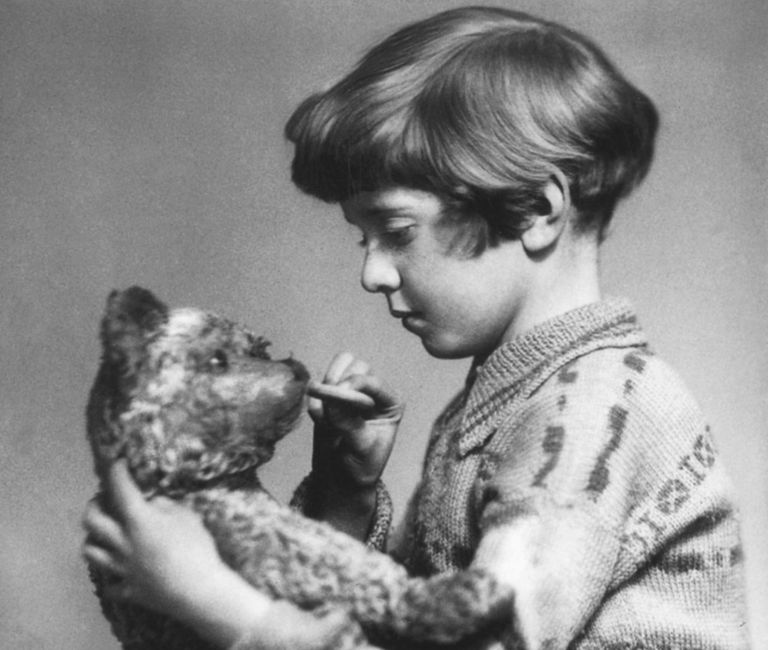The Real Life Story That Inspired Winnie-the-Pooh
The world-famous Winnie-the-Pooh stories were inspired by a real boy named Christopher Robin and his real Winnie-the-Pooh toy. This made many fans assume the real Christopher Robin’s childhood was as idyllic and magical as the tales from the Hundred-Acre Wood. But this simply wasn’t the case. In fact, the real Christopher Robin faced incredible difficulties in his childhood and later in life. He even came to dislike the bear the world fell in love with.
A life without worry
The very first Winnie-the-Pooh tales appeared in the 1924 poetry collection When We Were Very Young and 1926's Winnie-the-Pooh book. In these light-hearted stories, Christopher Robin plays in the Hundred-Acre Wood without a care in the world.
His main concerns include sourcing his best friend Winnie-the-Pooh’s next supply of honey. He also goes on an expedition to find the North Pole and throws woodland parties for his friends — Piglet, Eeyore, Owl, and Rabbit.
A writer goes to war
The person responsible for bringing the stuffed yellow bear to life was Alan Alexander Milne — or A. A. Milne. Before writing Winnie-the-Pooh, he enjoyed a career as a playwright and had published three novels. But first, Alan fought in World War I.
In 1916 he was wounded at the Battle of the Somme — a devastating campaign in which hundreds of thousands of men died. It seems that his time at war stuck with him, and he is thought to have experienced various symptoms of post-traumatic stress disorder.
Dealing with the fallout
After the war, the author reportedly mistook popping balloons for cannon fire and thought that buzzing bees were bullets. In his autobiography, It’s Too Late Now, Alan revealed it made him “almost physically sick” to think of “that nightmare of mental and moral degradation, the war.”
“It seems impossible to me now that any sensitive man could live through another war,” Alan wrote elsewhere in his memoir. “If not required to die on other ways, he would waste away of soul-sickness.”
A bumpy relationship
He had already married Daphne de Sélincourt in 1913, and in 1920 they had their son, Christopher Robin Milne. Five years after Alan returned from WWI, he decided to move his family to the countryside. They ended up in a county home called Cotchford Farm in East Sussex, England.
It is here that the inspiration for Pooh would be fully articulated. But despite what you might think from the Winnie-the-Pooh books, father and son did not have a particularly close relationship.

